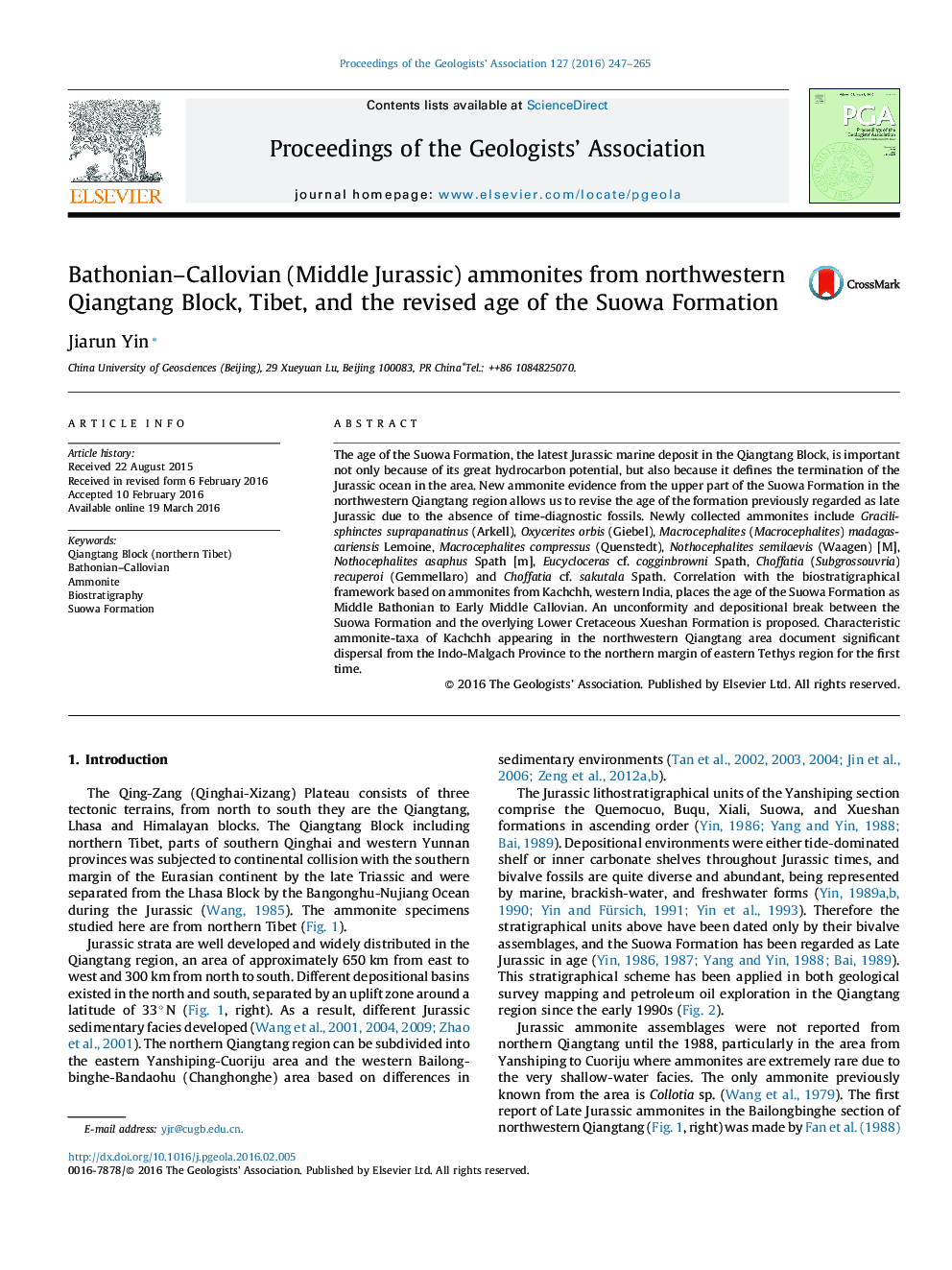| Article ID | Journal | Published Year | Pages | File Type |
|---|---|---|---|---|
| 4734987 | Proceedings of the Geologists' Association | 2016 | 19 Pages |
The age of the Suowa Formation, the latest Jurassic marine deposit in the Qiangtang Block, is important not only because of its great hydrocarbon potential, but also because it defines the termination of the Jurassic ocean in the area. New ammonite evidence from the upper part of the Suowa Formation in the northwestern Qiangtang region allows us to revise the age of the formation previously regarded as late Jurassic due to the absence of time-diagnostic fossils. Newly collected ammonites include Gracilisphinctes suprapanatinus (Arkell), Oxycerites orbis (Giebel), Macrocephalites (Macrocephalites) madagascariensis Lemoine, Macrocephalites compressus (Quenstedt), Nothocephalites semilaevis (Waagen) [M], Nothocephalites asaphus Spath [m], Eucycloceras cf. cogginbrowni Spath, Choffatia (Subgrossouvria) recuperoi (Gemmellaro) and Choffatia cf. sakutala Spath. Correlation with the biostratigraphical framework based on ammonites from Kachchh, western India, places the age of the Suowa Formation as Middle Bathonian to Early Middle Callovian. An unconformity and depositional break between the Suowa Formation and the overlying Lower Cretaceous Xueshan Formation is proposed. Characteristic ammonite-taxa of Kachchh appearing in the northwestern Qiangtang area document significant dispersal from the Indo-Malgach Province to the northern margin of eastern Tethys region for the first time.
